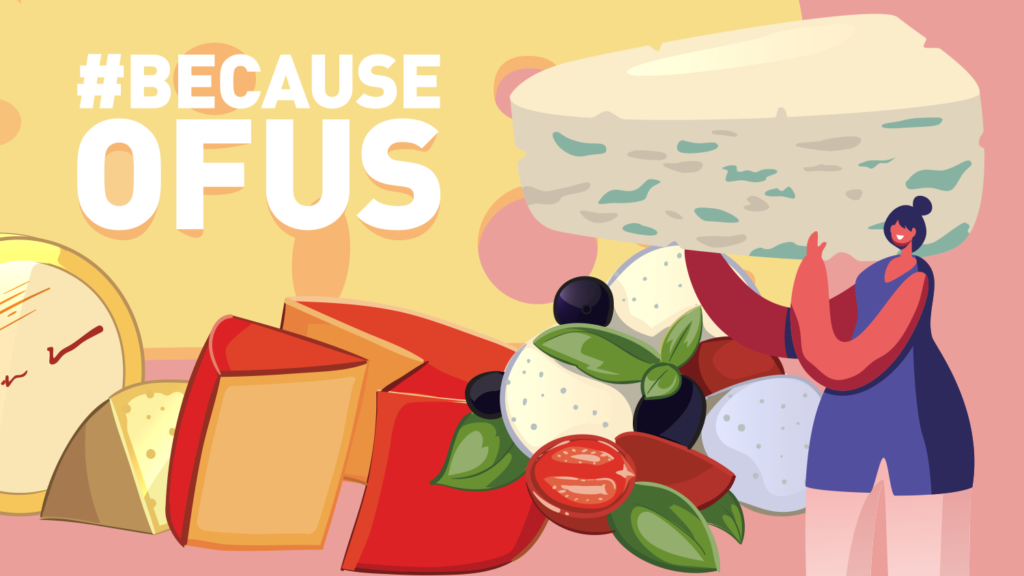
Revised standard allows more cheese types to enter the Chinese market
What is cheese?
Cheese is a food derived from milk.
During production, the milk (from cow, sheep, goat or mixed) is usually coagulated to form the cheese mass by adding rennet, mould and/or yeast (common types of culture). The mass is then separated from the remaining liquid and pressed into its final form. As widely-used cultures, mould and yeast are important ingredients that contribute to the texture and flavour of cheese.
The amount of mould and yeast in different types of cheese varies, depending on the desired texture and flavour. Some moulds and yeast make cheese taste fruity and lactic, like honey or cream, while some can create stronger and stranger flavours, such as cow manure or burnt onions. The mysterious flavours individual moulds and yeast create inspire love for cheese in many consumers around the world.
Mould and yeast continue to grow in the cheese after it is produced, which results in cheese being considered a ‘living food’ – food that is still growing when it is consumed.
Regulations on cheese
International standards
It has been proven that the presence of mould and yeast in cheese products does not form part of any recognised pathogenesis that may lead to illnesses, and thus does not present any danger to consumers. None of the relevant international standards, such as CODEX STAN 283-1978 or the EC 2073/2005, have set restrictions on mould and yeast in natural cheese.
Chinese standards
The previous Chinese national regulation Hygienic Standard for Cheese (GB 5420-2003) and the 2010 National Food Safety Standard for Cheese (GB 5420-2010) set the maximum level of mould and yeast at 50 colony-forming units per gram (cfu/g). However, some types of cheese require levels beyond 50 cfu/g to achieve their characteristic texture and flavour. Moreover, as mould and yeast continue growing after production, cheese with a level below 50 cfu/g on its production date can still go over the limit during its shelf life.
Therefore, the strict restrictions on the maximum levels of permissible mould and yeast prevented many cheese products that were widely sold around the world from entering the Chinese market. Furthermore, Chinese domestic cheese manufacturers cannot produce certain categories of cheese products in China because of the limits on mould and yeast in the relevant standards.
As the Chinese economy develops and consumption upgrades, increasing numbers of Chinese consumers are discovering a taste for cheese. However, the Chinese standards as described above affected cheese importation and industry development in China, consequently hindering the domestic consumption of cheese.
Advocacy efforts
Since 2009, a recommendation on the revision of the cheese standard has been included in the European Business in China Position Paper (Position Paper). In 2014, the Cheese Industry Desk was established and, since then, an individual paper on cheese has been included in the Position Paper.
The European Chamber and the Cheese Industry Desk (renamed as the Dairy Industry Desk in 2021) closely communicate with authorities and industry associations from both the European Union (EU) and China, including former EU Agriculture Commissioner Phil Hogan, the Chinese National Health Commission (NHC), the National Centre for Food Safety Risk Assessment (CFSA) and the National Dairy Engineer Technology Research Centre. The Chamber also submitted comments on every round of revision of relevant legislations, and bridged communication between authorities and industry.
Result
In March 2021, the NHC released the revised National Food Safety Standard (GB 5420-2021), which removed the limits on mould and yeast.
The new standard has singlehandedly increased the range of choices of cheeses now available to Chinese consumers by allowing European manufacturers to bring more types to the Chinese market. For example, in the first batch of EU Geographical Indications (GI) products listed under the EU-China GI Agreement that entered into force in March 2021, 13 per cent is cheese. Due to the release of the new standard, all of these European cheeses will now be able to enter the Chinese market unrestricted.
Looking forward
The European Chamber Dairy Industry Desk will continue to advocate for the removal of Chinese barriers to foreign dairy products and ingredients, in order to introduce a wide variety of qualified products to Chinese consumers and foster the development of the domestic dairy industry.


Recent Comments